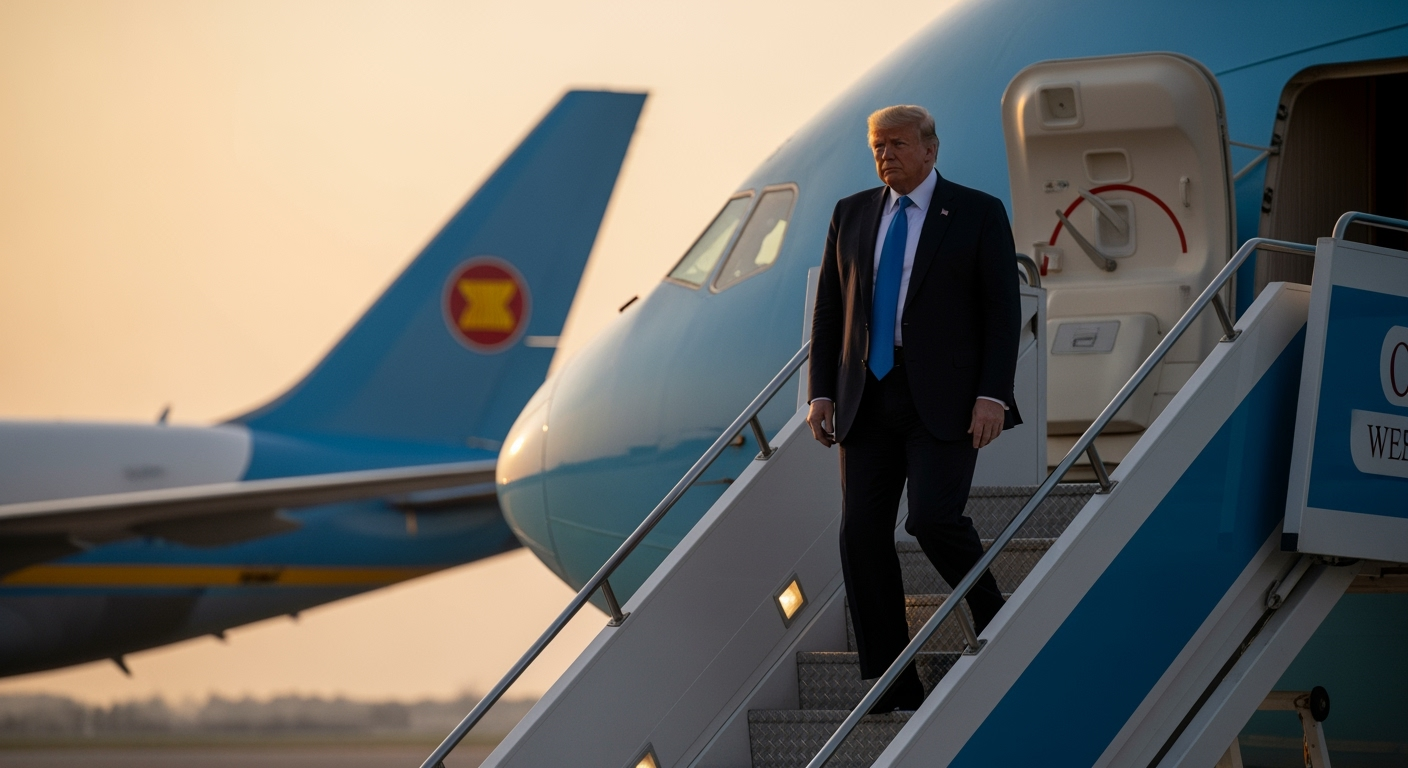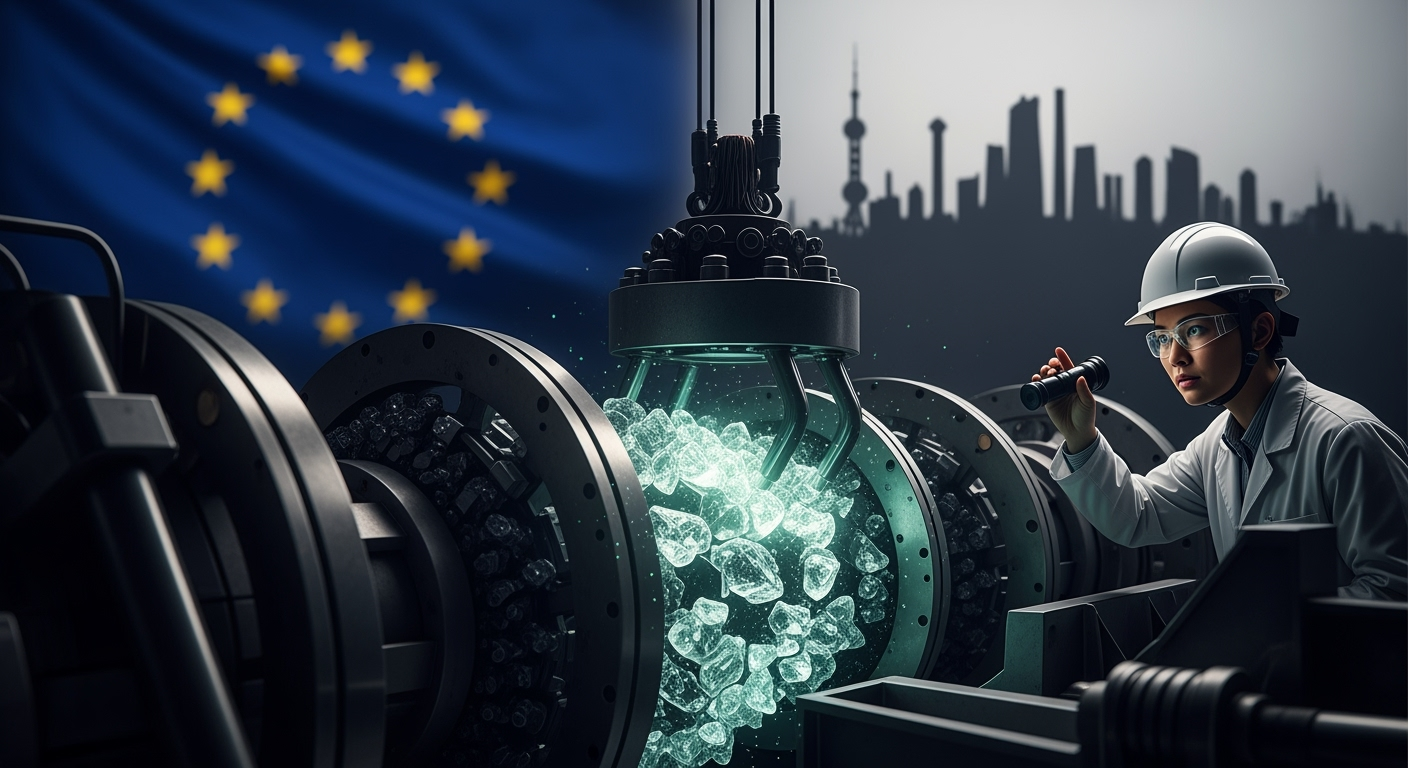Related Articles

Valencia Rises in Anger One Year After Deadly Floods, Demanding Accountability

President Trump Embarks on High-Stakes Asia Tour Amidst Domestic Challenges





BRUSSELS — The European Union is embarking on an urgent and ambitious endeavor to dismantle its profound dependence on China for critical rare earth elements, a strategic shift propelled by recent tightened export controls from Beijing. European Commission President Ursula von der Leyen has underscored the critical vulnerability this reliance poses to the bloc's industrial and strategic sectors, drawing parallels to Europe's past over-reliance on Russian energy. The comprehensive strategy aims to diversify supply chains, bolster domestic capabilities, and secure access to the essential materials that power modern technologies and the continent's green transition.
Rare earth elements, a group of 17 metallic elements, are indispensable components in a vast array of high-tech and strategically vital industries. They are the invisible engines driving electric vehicles, wind turbines, semiconductors, advanced defense systems, aerospace technology, and artificial intelligence chips. Their unique magnetic and catalytic properties make them irreplaceable in numerous applications essential for both economic prosperity and national security. The European Union's industrial landscape, committed to a green and digital transformation, finds these materials to be its "lifeblood".
However, Europe's access to these crucial resources is heavily concentrated in one nation: China. The Asian giant holds a near-monopoly across the rare earth value chain, from mining to sophisticated processing and the production of permanent magnets. In 2024, China accounted for approximately 60% of global rare earth mining output, a figure that dramatically escalates to about 91% for separation and refining processes. The EU's consumption of rare earth magnets, vital for its strategic industrial sectors, is particularly exposed, with over 90% imported from China. This overwhelming reliance creates a significant geopolitical and economic risk for the bloc.
The urgency of Europe's diversification efforts has been dramatically amplified by China's recent actions to tighten its export controls on rare earth elements and battery materials. In October, Beijing expanded restrictions to cover an additional five rare-earth metals, building on seven already restricted in April, effectively placing nearly all 17 rare-earth elements under stringent control. These measures are widely interpreted by Western governments and analysts as a strategic leveraging of critical minerals, potentially linked to broader economic frictions with the United States.
Von der Leyen explicitly warned that these decisions "severely hamper other countries except China from developing a rare earth industry, and this threatens the stability of global supply chains and will have a direct impact on European companies". She directly compared this situation to Europe's painful experience with energy dependence on Russia following the 2022 invasion of Ukraine, stating, "Europe cannot do things the same way anymore. We learned this lesson painfully with energy, we will not repeat it with critical materials". The move has sent shockwaves through global supply chains, impacting automotive lines, chipmakers, and increasing costs across various European sectors.
In response to this escalating challenge, the European Union has outlined a comprehensive and multi-faceted strategy to secure its critical raw material supply. At the heart of this endeavor is the newly proposed RESourceEU scheme, which mirrors the successful REPowerEU initiative designed to reduce reliance on Russian fossil fuels. This plan encompasses several key pillars: boosting domestic production and processing, establishing joint purchasing mechanisms, strategic stockpiling, and increasing recycling efforts.
Complementing RESourceEU is the Critical Raw Materials Act (CRMA), which entered into force in May 2024. This landmark legislation sets ambitious benchmarks for the EU by 2030, aiming for at least 10% of the bloc's annual consumption of strategic raw materials to come from domestic extraction, 40% from processing within the EU, and 25% from recycling. Furthermore, the CRMA mandates that no more than 65% of the EU's annual needs for any strategic raw material at any processing stage should originate from a single third country.
To achieve these goals, the EU is actively accelerating critical raw material partnerships with resource-rich nations worldwide. Countries such as Australia, Canada, Chile, Greenland, Kazakhstan, Uzbekistan, and Ukraine have been identified as key partners in the effort to diversify supply sources. Investment in strategic projects for the production and processing of critical raw materials within the EU is also a core focus, alongside efforts to enhance recycling infrastructure and urban mining initiatives. The EU is backing research projects, like REESilience, which demonstrate that tapping into even a small share of low-risk rare earth deposits outside China could significantly reduce Europe's import dependency.
Despite the ambitious nature of the EU's plans, the road to strategic autonomy in rare earths is fraught with significant challenges. Establishing new, resilient supply chains is a protracted and capital-intensive undertaking. Building mines, refineries, and permanent magnet production plants takes years, and the environmental impact of extraction and processing remains a concern that the EU seeks to address through sustainable practices.
Moreover, the implementation of the CRMA faces hurdles such as securing adequate funding, coordinating fragmented financial streams across member states, and overcoming domestic feedstock shortages. Global competition for these critical resources is intensifying, making diversification more complex. While the EU aims to significantly increase its domestic capabilities, its demand for rare earth metals is projected to surge dramatically—five to six times by 2030 and six to seven times by 2050—driven by the green transition. This growing demand underscores the difficulty of reducing import dependency in the short to medium term. China's sophisticated processing capabilities and integrated supply chain dominance, often operating at a loss to maintain market control, present a formidable challenge to new entrants.
The European Union's concerted effort to end its rare earth dependence on China represents a pivotal moment in its pursuit of strategic autonomy. Fueled by Ursula von der Leyen's clear directives and China's assertive use of export controls as a geopolitical tool, the bloc is mobilizing its legislative, diplomatic, and industrial resources. The RESourceEU scheme and the Critical Raw Materials Act provide a robust framework for action, encompassing domestic production, international partnerships, and circular economy principles.
While the inherent complexities and significant investments required mean that a complete severance of dependence will be a long-term endeavor, the immediate and severe impact of recent Chinese restrictions highlights the indispensable nature of these efforts. Building a resilient and diversified supply chain for rare earth elements is not merely an economic imperative; it is a fundamental pillar for securing Europe's industrial future, realizing its green and digital ambitions, and safeguarding its strategic independence in an increasingly volatile global landscape.